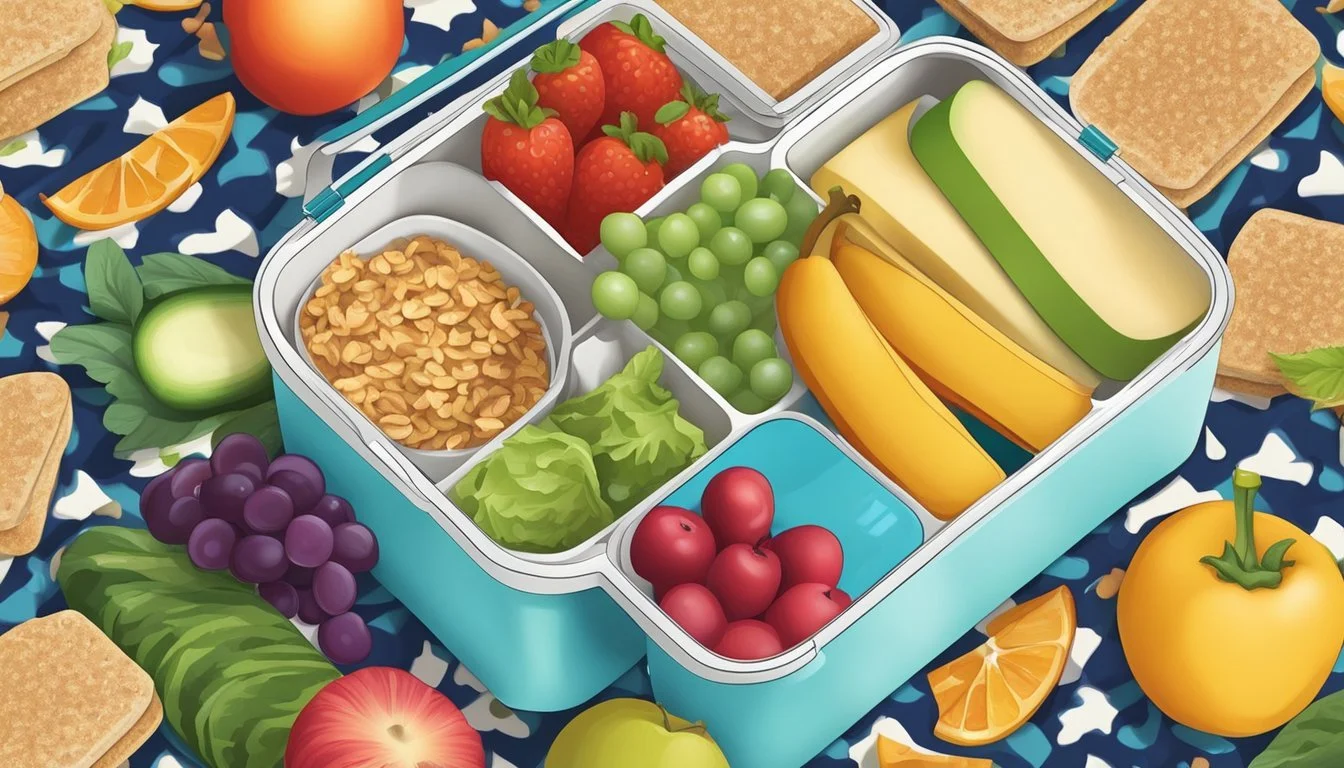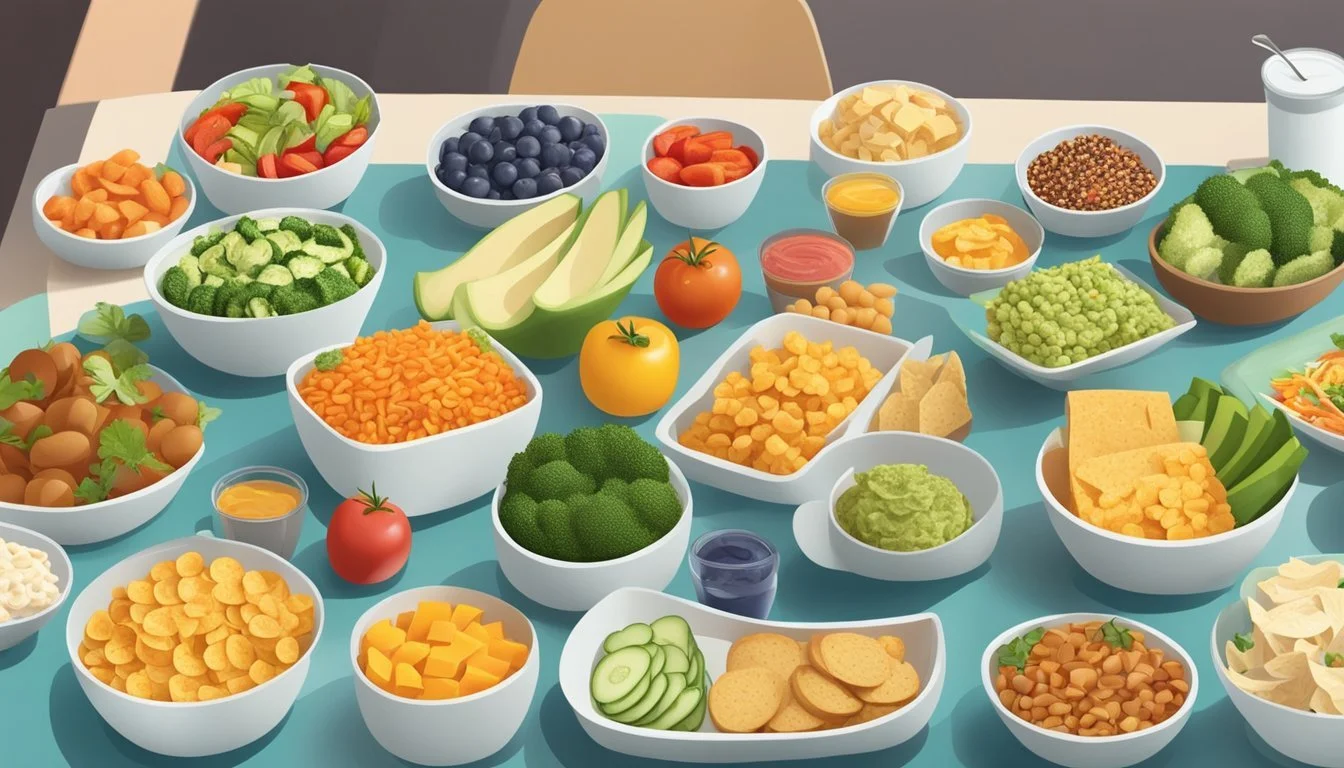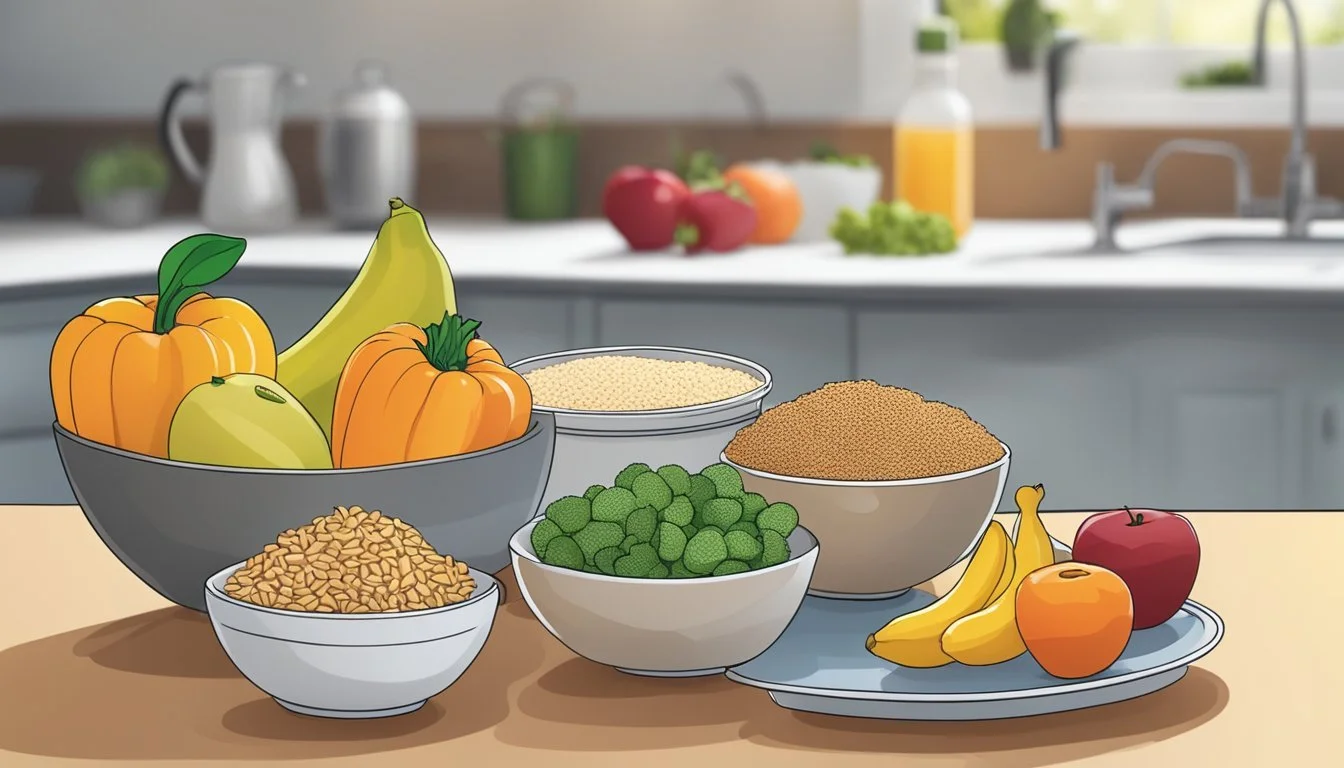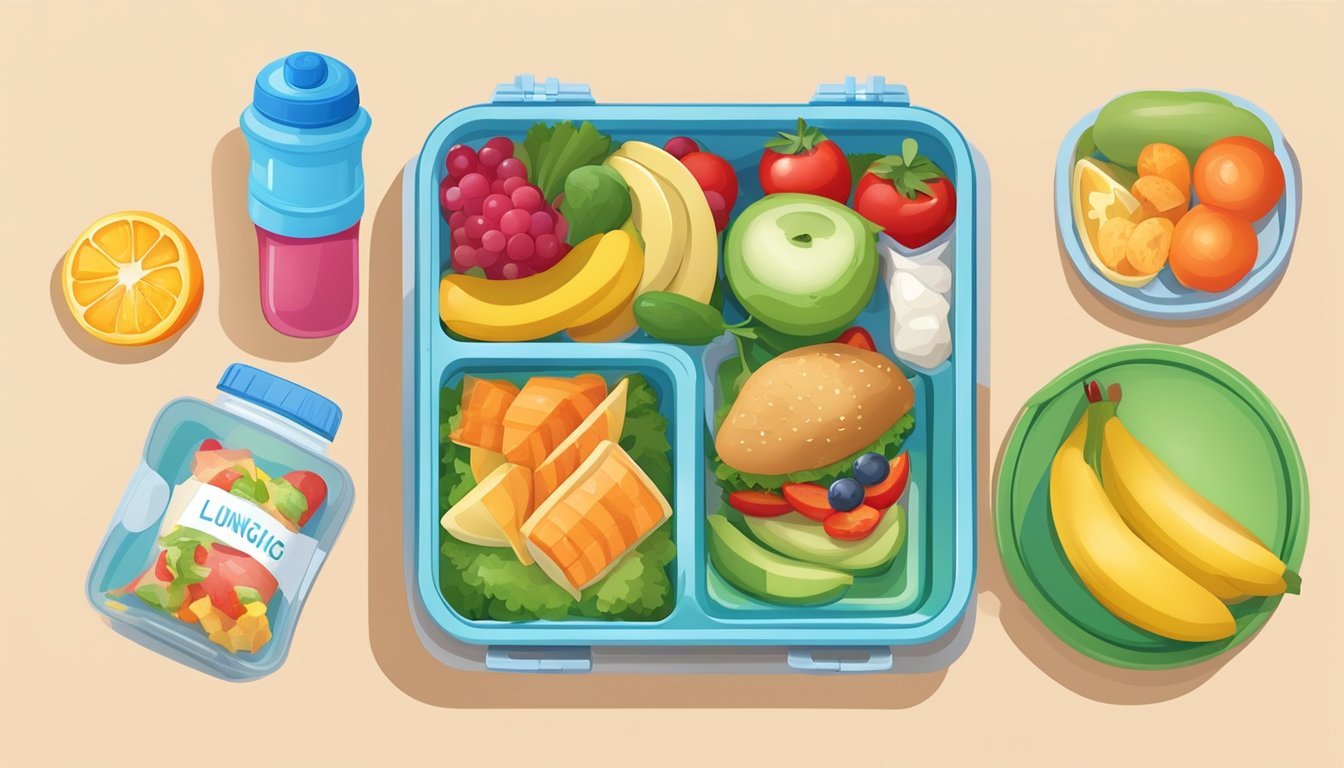Fun and Balanced Lunch Ideas for Kids with Type Diabetes
Packing lunches for children with diabetes requires careful consideration of nutritional content and carbohydrate balance. A well-planned diabetes-friendly lunch can help maintain stable blood sugar levels while providing essential nutrients for growing bodies. Parents and caregivers can create appealing and healthy meals by incorporating a mix of lean proteins, whole grains, fruits, and vegetables.
Simple yet nutritious options include turkey and cheese wraps with spinach, yogurt parfaits with berries and nuts, or even homemade chili with beans and vegetables. These meals offer a good balance of carbohydrates, proteins, and fats to keep kids energized throughout the school day. Portion control plays a key role in managing blood sugar, so using small containers or bento-style lunchboxes can be helpful.
Involving children in the lunch-planning process can make them more excited about their meals and encourage healthier eating habits. By offering a variety of colorful, tasty options, parents can ensure their children with diabetes enjoy satisfying lunches while staying on track with their health goals.
Understanding Diabetes in Children
Diabetes in children involves challenges with blood sugar regulation due to issues with insulin production or effectiveness. Proper management is crucial for long-term health and normal childhood development.
Type 1 vs Type 2 Diabetes
Type 1 diabetes is an autoimmune condition where the pancreas produces little to no insulin. It typically develops in childhood or adolescence. Children with Type 1 diabetes require lifelong insulin therapy.
Type 2 diabetes occurs when the body becomes resistant to insulin or doesn't produce enough. While traditionally associated with adults, it's increasingly diagnosed in children, often linked to obesity and lifestyle factors.
Children with Type 2 diabetes may initially manage their condition through diet, exercise, and oral medications. Some may eventually need insulin therapy.
Importance of Blood Sugar Management
Maintaining stable blood sugar levels is critical for children with diabetes. Consistent blood sugar management helps prevent short-term complications like hypoglycemia or hyperglycemia.
Long-term blood sugar control reduces the risk of diabetes-related complications affecting the eyes, kidneys, nerves, and cardiovascular system. It also supports normal growth and development in children.
Regular blood sugar monitoring, balanced meals, physical activity, and appropriate medication are key components of effective management. Collaboration between healthcare providers, parents, and the child is essential for success.
The Role of Insulin in Diabetes
Insulin is a hormone that allows cells to use glucose from the bloodstream for energy. In diabetes, this process is disrupted, leading to elevated blood sugar levels.
For children with Type 1 diabetes, insulin replacement through injections or an insulin pump is necessary. The insulin dose must be carefully calculated based on food intake, activity levels, and current blood sugar readings.
In Type 2 diabetes, the body may still produce insulin, but it's either insufficient or not used effectively. Some children with Type 2 diabetes may require insulin therapy if other treatments aren't effective in controlling blood sugar levels.
Proper insulin management is crucial for preventing both immediate and long-term complications of diabetes in children.
Nutritional Basics for Diabetes-Friendly Kids' Lunches
Creating diabetes-friendly lunches for kids requires balancing key nutrients. Focusing on macronutrients, fiber, and healthy fats helps manage blood sugar levels while providing essential nourishment.
Macronutrients: Carbohydrates, Protein, and Fat
Carbohydrates have the most significant impact on blood glucose. Complex carbs are preferred over simple sugars. Aim for 45-60 grams of carbs per meal, depending on the child's needs.
Protein helps stabilize blood sugar and promotes satiety. Include lean meats, fish, eggs, or plant-based options like beans and tofu. A general guideline is 1 gram of protein per kilogram of body weight daily.
Fats slow digestion and absorption of glucose. Choose heart-healthy fats like avocado, nuts, and olive oil. Limit saturated fats from processed foods and fatty meats.
Fiber Content and Its Importance
Fiber is crucial for managing diabetes. It slows digestion, preventing rapid blood sugar spikes. Aim for 14 grams of fiber per 1,000 calories consumed.
High-fiber foods include:
Whole grains (brown rice, quinoa)
Legumes (lentils, chickpeas)
Vegetables (broccoli, carrots)
Fruits (berries, apples with skin)
Fiber also promotes fullness, aiding in weight management. Gradual increase in fiber intake prevents digestive discomfort.
Healthy Fats vs. Unhealthy Fats
Healthy fats support heart health and hormone balance. They include monounsaturated and polyunsaturated fats found in:
Nuts and seeds
Fatty fish (salmon, mackerel)
Plant oils (olive, avocado)
Limit unhealthy fats like trans fats and excessive saturated fats. These can increase inflammation and cardiovascular risk. Avoid fried foods, packaged snacks, and full-fat dairy products.
Balancing fat intake helps control blood sugar levels and provides essential nutrients. Aim for 20-35% of total daily calories from fat, prioritizing healthy sources.
Lunch Ideas for Kids with Diabetes
Crafting nutritious and appealing lunches for children with diabetes is crucial for managing blood sugar levels while ensuring they enjoy their meals. These lunch ideas balance carbohydrates, proteins, and healthy fats to support steady energy throughout the day.
Poultry-Based Lunches
Chicken and turkey offer lean protein options that can help stabilize blood sugar. Try grilled chicken strips with whole-grain crackers and cherry tomatoes. Turkey roll-ups made with low-fat cream cheese and cucumber slices provide a fun, handheld option.
For a warm lunch, prepare a thermos of chicken soup with added vegetables and a side of whole-grain bread. Chicken salad made with Greek yogurt instead of mayonnaise, served on a bed of lettuce or in a whole-wheat pita, offers a protein-packed meal.
Consider making mini chicken kebabs with bell peppers and zucchini for a colorful, diabetes-friendly lunch.
Fish and Seafood Lunch Options
Fish is an excellent source of protein and omega-3 fatty acids. Canned tuna mixed with avocado makes a tasty spread for whole-grain bread or crackers. Salmon patties paired with a small serving of quinoa and steamed broccoli provide a balanced meal.
Try making fish tacos using small corn tortillas, grilled white fish, and a tangy slaw. For a cold option, create a shrimp and vegetable pasta salad using whole-grain pasta and a light vinaigrette dressing.
Pack sushi rolls made with brown rice and cucumber or avocado for a fun, diabetes-friendly lunch option.
Vegetarian and Vegan Choices
Plant-based lunches can be both nutritious and satisfying for kids with diabetes. A bean and cheese quesadilla on a whole-wheat tortilla offers protein and fiber. Hummus with vegetable sticks and whole-grain pita triangles makes an easy, balanced meal.
Create a colorful salad with mixed greens, cherry tomatoes, cucumber, and chickpeas, topped with a light dressing. For a protein-rich vegan option, try a tofu stir-fry with mixed vegetables and brown rice.
Lentil soup in a thermos, accompanied by a small whole-grain roll, provides warmth and nutrition on cooler days.
Quick Lunch Solutions
For busy mornings, having quick lunch options is essential. Prepare a batch of whole-grain muffins with added nuts and seeds for a grab-and-go option. Pair with a cheese stick and apple slices for a balanced meal.
Create a bento box with hard-boiled eggs, carrot sticks, grape tomatoes, and whole-grain crackers. Yogurt parfaits layered with low-fat Greek yogurt, berries, and a sprinkle of low-sugar granola offer a sweet yet diabetes-friendly treat.
Wraps made with lean turkey, lettuce, and a thin spread of hummus can be prepared the night before for a quick morning assembly.
Creative Salad Ideas
Salads offer a versatile and nutritious option for kids with diabetes. These colorful dishes can be customized to include a variety of flavors and textures while maintaining balanced blood sugar levels.
Quinoa Salad Variations
Quinoa salads provide a protein-rich base that can be paired with various ingredients. Mix cooked quinoa with diced cucumbers, cherry tomatoes, and feta cheese for a Mediterranean-inspired dish. Add black beans, corn, and lime juice for a Southwest flavor.
For a fruity twist, combine quinoa with strawberries, blueberries, and a light honey-lemon dressing. Sprinkle chopped almonds or pumpkin seeds on top for extra crunch and healthy fats. These salads can be prepared in advance and stored in the refrigerator for easy lunchbox packing.
Green and Garden Salads
Mixed greens form the foundation of nutrient-packed salads. Start with spinach, kale, or romaine lettuce. Add colorful vegetables like bell peppers, carrots, and snap peas.
For a fun twist, try a "green goddess" salad with finely chopped cabbage, cucumbers, and a creamy avocado dressing. Include sliced grapes or mandarin orange segments for natural sweetness. Toasted sunflower seeds or crushed whole-grain crackers can add satisfying crunch without spiking blood sugar.
Protein-Packed Salads
Incorporating lean proteins into salads helps stabilize blood glucose levels. Grilled chicken breast, hard-boiled eggs, or canned tuna are excellent options. For plant-based protein, add chickpeas or edamame.
Create a Cobb-style salad with rows of diced turkey, avocado, tomatoes, and crumbled blue cheese over mixed greens. A Greek-inspired salad with grilled chicken, olives, and a light vinaigrette dressing offers a flavorful alternative. Serve protein salads with whole-grain crackers or a small piece of fruit for a balanced meal.
Smart Sandwiches and Wraps
Sandwiches and wraps offer versatile, portable options for diabetes-friendly lunches. These handheld meals can be packed with nutrients and balanced ingredients to help maintain steady blood sugar levels.
Whole-Grain and High-Fiber Sandwiches
Whole-grain bread forms the foundation of nutritious sandwiches for kids with diabetes. These breads provide complex carbohydrates and fiber, which help regulate blood sugar.
A grilled chicken sandwich on whole-wheat bread is a protein-rich choice. Add sliced tomatoes and lettuce for extra nutrients and crunch.
Tuna salad made with Greek yogurt instead of mayonnaise offers a healthier twist. Spread it on whole-grain bread and top with cucumber slices for a satisfying lunch.
For a vegetarian option, try a veggie and hummus sandwich. Layer hummus, sliced bell peppers, cucumbers, and spinach between two slices of whole-grain bread.
Wrap It Up: Healthy and Satisfying Wraps
Wraps can be an excellent alternative to traditional sandwiches, often containing fewer carbohydrates. Whole-wheat or low-carb tortillas make great bases for diabetes-friendly wraps.
An avocado wrap combines mashed avocado, turkey slices, and crisp lettuce in a whole-wheat tortilla. This provides healthy fats and protein to help stabilize blood sugar.
A chicken avocado BLT wrap offers a twist on the classic sandwich. Use grilled chicken, a small amount of turkey bacon, lettuce, tomato, and avocado slices. Roll it up in a low-carb tortilla for a filling meal.
Veggie wraps are another option. Fill a whole-wheat tortilla with hummus, shredded carrots, cucumber, and bell peppers for a crunchy, nutrient-packed lunch.
Side Dishes and Snacks
Nutritious side dishes and snacks play a crucial role in managing blood sugar levels for kids with diabetes. These options provide essential nutrients while helping maintain stable glucose throughout the day.
Vegetable-Based Sides
Vegetables are excellent low-carb options for diabetic children. Steamed broccoli and cauliflower make great sides, packed with fiber and vitamins. Carrot sticks offer a crunchy texture and natural sweetness.
Roasted vegetables are another tasty choice. Toss broccoli florets or cauliflower in olive oil and seasonings, then bake until crispy. This method enhances flavor while preserving nutrients.
For a fun twist, try making veggie "fries" by cutting zucchini or sweet potatoes into sticks, coating them lightly with olive oil and spices, then baking until crisp.
Dairy and Non-Dairy Alternatives
Greek yogurt is a protein-rich option that can help stabilize blood sugar. It's versatile and can be paired with fresh berries or a sprinkle of nuts for added nutrition.
Cottage cheese is another excellent choice, offering protein and calcium. It can be eaten plain or mixed with diced vegetables for a savory snack.
For those who prefer non-dairy options, unsweetened almond milk or coconut yogurt can be good alternatives. These can be used as a base for smoothies or paired with whole grain cereal.
Cheese sticks or cubes make convenient, portable snacks. They provide protein and calcium without added sugars.
Snacks to Stabilize Blood Sugar
Nuts are ideal for maintaining steady blood sugar levels. A small handful of almonds, walnuts, or pistachios can provide healthy fats and protein.
Hummus with vegetable sticks is a balanced snack option. The combination of protein from chickpeas and fiber from veggies helps slow digestion and prevent blood sugar spikes.
Hard-boiled eggs are easy to prepare and offer protein without carbohydrates. They can be eaten alone or sliced onto whole grain crackers for a more substantial snack.
Chia seed pudding made with unsweetened almond milk and a small amount of fruit can provide fiber, protein, and healthy fats to help stabilize blood sugar levels.
Meal Planning and Preparation
Effective meal planning and preparation are crucial for managing diabetes in children. These strategies help maintain consistent blood sugar levels and ensure nutritious lunches are readily available.
Weekly Lunch Planning
Start by creating a weekly lunch menu. Include a variety of foods from different food groups to ensure balanced nutrition. Aim for a mix of lean proteins, whole grains, fruits, vegetables, and healthy fats. Involve your child in the planning process to increase their interest in healthy eating.
Use a meal planning template or app to organize ideas and track carbohydrate content. Consider your child's school schedule, activities, and insulin regimen when planning meals. Rotate favorite dishes to maintain variety while keeping preparation simple.
Prepping for Convenience
Dedicate time each week for meal prepping. Wash and chop fruits and vegetables in advance. Cook and portion proteins like grilled chicken or hard-boiled eggs. Prepare whole grains such as quinoa or brown rice in batches.
Store prepped ingredients in labeled containers for easy assembly. Use bento-style lunch boxes to maintain proper portion sizes. Prepare grab-and-go snacks like trail mix or cut veggies with hummus.
Freeze sandwiches or wraps for quick defrosting. Pack lunch items the night before to save time in the morning. Include an ice pack to keep perishables fresh until lunchtime.
Eating Out with Diabetes
Dining out with diabetes requires careful planning and smart choices. Children can still enjoy restaurant meals while managing their blood sugar levels effectively.
Choosing Diabetes-Friendly Options at Restaurants
When eating out, opt for grilled, baked, or roasted proteins instead of fried options. Choose vegetables as side dishes over starchy alternatives. Ask for dressings and sauces on the side to control portions.
Request nutrition information to make informed decisions. Many restaurants now provide calorie counts and carbohydrate content for their menu items.
Consider sharing large portions or asking for a to-go box at the start of the meal. This helps with portion control and prevents overeating.
Drink water or unsweetened beverages instead of sugary sodas or juices. If ordering dessert, share it with the table to limit carbohydrate intake.
Navigating Fast Food Menus
Fast food doesn't have to be off-limits for kids with diabetes. Look for grilled chicken sandwiches, salads with lean protein, or small burgers without cheese or bacon.
Choose apple slices, side salads, or small portions of fries as sides. Opt for water, unsweetened tea, or diet drinks instead of regular sodas.
Many fast food chains now offer nutrition calculators on their websites or apps. Use these tools to plan meals in advance and stay within carbohydrate limits.
Consider "bunless" options or lettuce wraps to reduce carb intake. Avoid supersizing meals, as this can lead to excessive calorie and carbohydrate consumption.








